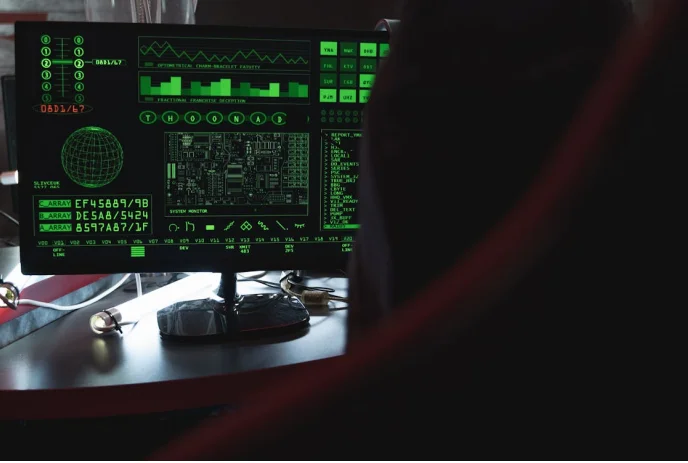Improving Organizational Resilience Through Advanced Tech Systems

What happens to a company when the tech goes down for five minutes? That might’ve been a throwaway question a decade ago. Now it’s the kind of thing that makes the boardroom go silent. As the past few years have shown—through supply chain meltdowns, ransomware attacks, and global disruptions—digital strength isn’t a nice-to-have. It’s the difference between moving forward and falling apart. In this blog, we will share how advanced tech systems play a defining role in strengthening organizational resilience.
Real Stability Starts With Visibility and Speed
Resilience doesn’t mean having zero problems. It means seeing the problems fast enough to respond before they cascade. Today’s organizations are hybrid by design—remote teams, cloud infrastructure, edge devices, third-party integrations—all stitched together in a constantly changing mesh. That complexity is the new norm. But so is the risk that comes with it.
One blind spot is all it takes for a minor issue to snowball. A slow-loading dashboard? Could be a bandwidth hiccup. Or it could be the first sign of a broader failure creeping across your network. You don’t know unless your systems tell you, and they won’t unless you’ve wired them to do exactly that.
This is where the Heimdal unified cybersecurity platform becomes especially relevant. As more companies aim to simplify fragmented security stacks and reduce operational drag, tools that merge prevention, detection, and response into one seamless ecosystem are gaining real traction. Heimdal allows organizations to monitor, control, and react across the entire IT infrastructure without constantly toggling between disconnected tools.
Instead of relying on siloed departments scrambling to coordinate during an outage or breach, Heimdal builds a central nervous system. It allows teams to detect threats in motion, stop them early, and automate large parts of the response. This kind of platform doesn’t just defend against what’s happening now—it builds muscle memory for the next threat, because it turns every incident into actionable intelligence. That’s the kind of muscle today’s organizations can’t afford to ignore.
Resilience Is Built Into Design—Not Bolted On After
Too many companies treat resilience like a fire extinguisher—hang it on the wall, hope it works when you need it, and try not to think about it otherwise. But the most resilient organizations design for disruption before it happens. They don’t just buy tools; they structure their systems around how people and platforms will behave under pressure.
Think of how modern tech companies test for outages. Chaos engineering—literally breaking things on purpose to see what survives—has become standard practice. Netflix runs “chaos monkeys” to take down services randomly. The goal isn’t destruction. It’s learning. It’s building systems that can bend without breaking and recover without human heroics.
That philosophy is slowly spreading beyond Silicon Valley. In healthcare, finance, logistics—industries where downtime isn’t just expensive but dangerous—companies are investing in self-healing systems, redundant paths, and automated decision-making that kicks in the moment anomalies surface.
The right platforms make that easier. Automated patching, real-time alerts, identity-based access control—these features aren’t just conveniences. They’re structural reinforcements. When they’re missing, recovery depends on manual reaction. When they’re embedded, recovery starts before anyone panics.
Workforce Agility Depends on the Right Digital Backbone
It’s easy to focus on systems and forget the people who use them. But resilience isn’t just about tech. It’s also about how fast teams can adapt when plans get disrupted. The past few years—remote work, shifting tools, changing policies—have shown just how quickly operations can be turned upside down.
The companies that adapted best didn’t do so by accident. They’d already invested in strong IT backbones that allowed flexibility without chaos. Single sign-on. Device management. Secure file access from anywhere. Clear policies and automated enforcement. When your team can pivot overnight without losing security or functionality, that’s real resilience in action.
But none of that happens in a vacuum. It’s not just about giving employees laptops and VPNs. It’s about giving IT the tools to see what’s happening, respond to unusual behavior, and protect systems without slowing people down. This balance between security and usability used to be treated like a trade-off. Now, it’s a baseline requirement.
Organizations that ignore this end up micromanaging risk and slowing down work. Those that build it into their systems empower people to adapt faster—whether that means onboarding remote workers, shifting workloads to new tools, or recovering from internal errors with minimal downtime.
Data Is a Resilience Asset—If You Actually Use It
Every organization today is sitting on a pile of data. Operational logs, user behavior, system performance, error rates—it’s all there. The problem isn’t that data doesn’t exist. It’s that it often gets ignored until something breaks.
Resilient companies take the opposite approach. They use data to predict weak points before they snap. They spot patterns that signal deeper issues. They test responses in simulated environments and use that feedback to fine-tune the real ones. In short, they treat data like a living part of the system, not a postmortem tool.
But using data well means collecting it in the right way, organizing it properly, and putting it in front of the people who can act on it. This is where platform integration matters. Systems that gather insights but can’t share them are just digital junk drawers. Insights only matter if they’re shared across teams, understood in context, and tied to real actions.
The growing push toward observability over simple monitoring reflects this shift. It’s not just about knowing that something happened. It’s about understanding why—and being able to answer that question quickly, no matter where you are in the system.
Risk Isn’t Going Away—But Response Can Get Smarter
No tech system is perfect. Outages will happen. Breaches will be attempted. Mistakes will be made. Resilience doesn’t pretend those risks can be eliminated. It just builds a smarter, faster, more coordinated way to deal with them when they show up.
Smarter response means less blame and more preparation. It means rehearsed drills, automatic rollbacks, decision trees built in advance. It means platforms that surface threats early enough to contain them before they explode. And it means teams that know their tools well enough to act decisively under pressure.
The future belongs to organizations that treat resilience not as a last-minute response plan, but as a living part of how they operate every day. This isn’t about fear. It’s about readiness. It’s about having systems and teams that don’t just react—but recover stronger.
When those systems are powered by integrated platforms, real-time data, and built-in automation, resilience stops being a buzzword. It becomes a competitive edge. One that doesn’t just protect what you’ve built, but helps you move faster, adapt smarter, and stay ahead—no matter what comes next.

Retail Banking Solutions: A Roadmap for Community Banks to Scale Securely

Essential Tips for Small Business Liability Protection

Best Tips and Tricks for Bitcoin Investments

Onsite Tire Change in Ottawa : Safe Fast & Professional Tire Services

Accelerating drug discovery through the DEL-ML-CS approach

Cybersecurity: How Managed and Response Providers Strengthen Corporate Reputation

Improving Organizational Resilience Through Advanced Tech Systems

Maximizing Digital Security with Blockchain Secure Services while Ensuring Business Growth!








